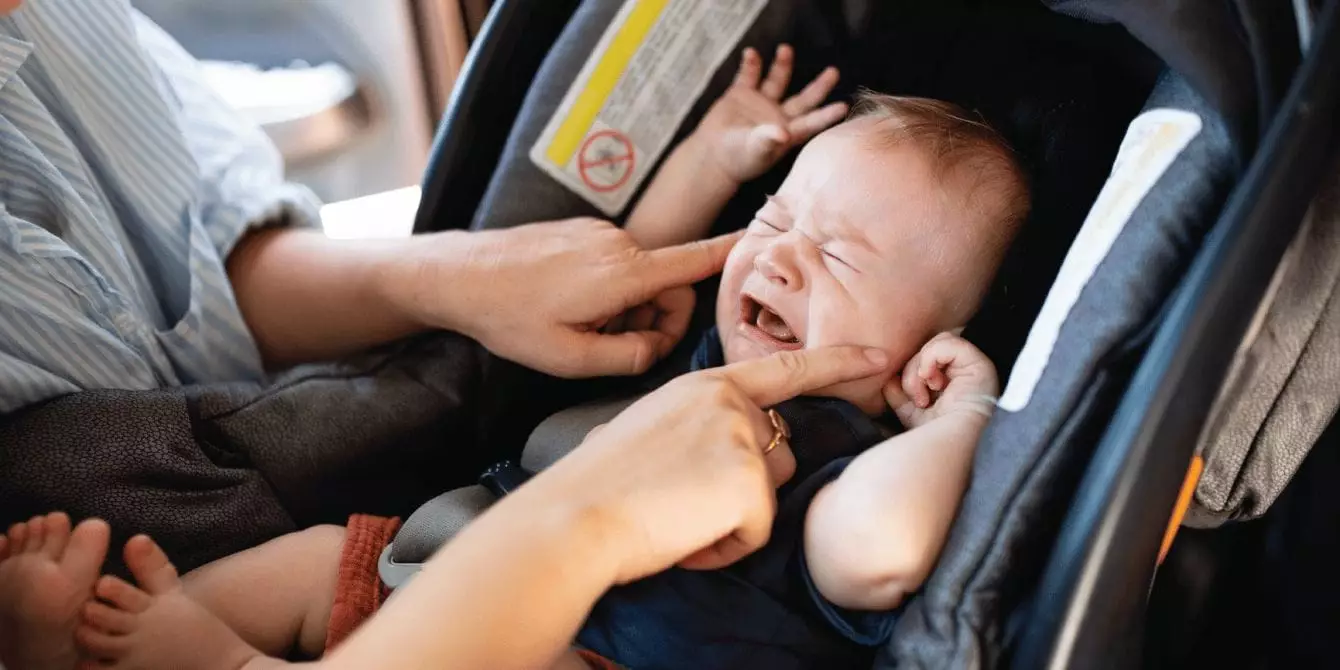Traveling with infants is often a battlefield of emotions, patience, and exhaustion. The stark reality is that not all babies take to car rides with calm acceptance. While some seem to drift into sleep the moment the vehicle starts rolling, many others respond with high-pitched wails and relentless crying, leaving parents drained and overwhelmed. This universal dilemma underscores a crucial point: the challenge isn’t merely about safety—it’s about managing emotional distress and the chaos that accompanies it.
Many parents, myself included, have grappled with the dread of knowing that a car ride will soon involve a symphony of sobs. The emotional impact for parents is profound; hearing your baby scream triggers instinctive distress—panic, helplessness, and even helpless anger. From a scientific perspective, it’s fascinating yet upsetting how the human psyche is hardwired to respond more strongly to the cries of infants. This primal response, while protective, can escalate stress levels in parents, making even short trips feel like insurmountable hurdles.
What complicates matters further is the fact that babies aren’t aware of the safety benefits their car seats provide—they simply know they are restrained and unable to see their mother or caregiver. This helplessness amplifies their distress, creating a vicious cycle of crying and parental stress. The long-term implications are serious; prolonged or intense crying can even cause physical discomfort like vomiting or hoarseness, increasing parental anxiety and complicating the situation further.
Understanding Infant Crying and Its Impact
The cry itself is a complex signal—a desperate call for contact, comfort, and reassurance. Dr. Teri Mitchell describes certain cries as ‘separation distress cries,’ which are evolutionarily designed to prompt caregivers to respond immediately. When this instinctive call for help goes unanswered due to constraints of time or circumstance, the result can be prolonged agitation from the infant, intensifying feelings of anxiety and helplessness in parents.
This emotional tension is not trivial. Research supports that persistent crying creates a state of heightened stress—not only for the child but also for the caregiver. Elevated heart rates, increased stress hormones, and feelings of despair can all combine in a potent, negative feedback loop. Recognizing and understanding this emotional impact is key to strategizing better responses and, ultimately, improving the quality of travel experiences for families.
Practical Strategies to Make Car Rides More Bearable
While there’s no magic pill to eliminate crying entirely, several strategies can significantly ease the process. The cornerstone of success is comfort—making the car seat as inviting as possible from the outset. Parents should prioritize proper positioning, avoiding the discomfort caused by straps pressing against soft tissues or startling the baby. Using accessories like StrapsAway can reduce initial discomfort by keeping straps out of the way during loading and unloading. These simple tools help create a smoother transition, reducing the chances of waking a sleeping baby or instilling immediate dislike.
Familiarity plays a pivotal role. Gradually introducing the child to the car, starting with short, positive trips, can develop a sense of security. As Mariah M. explains, accustoming her son to the car through regular, relaxed outings made a significant difference. The strategy involves associating the vehicle with positive experiences—playing favorite music, singing, or engaging in gentle games during brief stops. Consistency in these efforts helps the baby form positive associations and may eventually lead to more peaceful rides.
Another critical factor is temperature regulation. Contrary to common assumptions, babies often dislike being too cold—especially when bundled excessively. Over-bundling can cause overheating, which makes any ride uncomfortable. Dressing babies in normal clothes and reserving bulky layers for when the child is outside the car prevents overheating and ensures straps are snug and effective.
Timing is also essential. Planning trips during naps or after meals allows babies to rest or settle easily. For instance, some parents have found that scheduling long rides during a well-timed nap prevents distress and turns travel into a more passive activity for the infant. Using soothing sounds or music further enhances calmness, with research backing their calming effects. Curating a playlist of beloved tunes or singing along with your child can provide reassurance and comfort, creating an emotional buffer amidst the chaos.
Innovative Tools and Environmental Adjustments
Technology can also be a parent’s ally. Devices like portable sound machines—such as the “orange miracle” microphone-shaped shusher—offer a familiar human voice that can quickly lull a crying baby into calmness. The advantage of these gadgets is their portability and customizable volume, ensuring comfort without disturbing the entire car.
Environmental adjustments, such as ensuring the back of the car seat isn’t flush against the front seats, can influence ride smoothness. Moving the seat slightly away from the driver or passenger seat reduces bumpy vibrations that upset little ones. These small modifications can improve comfort, making a tangible difference in how a baby responds to car rides.
Dealing with a baby’s physical comfort extends beyond temperature and seat positioning. Gas and reflux are common issues that can turn a simple trip into a nightmare. Planning trips after the baby’s digestion or managing reflux with proper feeding practices makes a big difference. Certain natural remedies and consulting with pediatricians about reflux management can create a calmer, less uncomfortable ride.
Acceptance and Patience: The Final Keys to Peaceful Journeys
Despite all effort and preparation, some babies will still cry in the car. For parents enduring months or even a year of distress, patience becomes the most valuable companion. As Emily G. reflects, her third child’s prolonged crying phase ultimately passed in time—reminding us that growth and change are constants.
The reality is that these challenging phases are temporary. The critical factor is maintaining a hopeful attitude, recognizing that with patience, perseverance, and strategic adjustments, the crying will diminish. Embracing this mindset can transform the experience from one of frustration to one of resilience, helping parents navigate through the most tumultuous travel days with a little more grace.
Ultimately, mastering peaceful car rides isn’t about eradicating crying overnight but about creating an environment where distress is minimized and comfort is maximized. Small adjustments, patience, and a positive outlook are your most potent tools in turning dreaded journeys into manageable, even pleasant, experiences for both parent and child.

